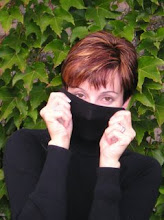December 16
The Holly and the Ivy
sung by The Choir of Winchester Cathedral,
sung by The Choir of Winchester Cathedral,
arranged by Walford Davies (video, below)
and a more uncommon version, sung by
Kate Rusby, "The Barnsley Nightingale" (music player, above right)
The holly and the ivy,
When they are both full grown
Of all the trees that are in the wood
The holly bears the crown
O the rising of the sun
And the running of the deer
The playing of the merry organ
Sweet singing of the choir
The holly bears a blossom
As white as lily flower
And Mary bore sweet Jesus Christ
To be our sweet Saviour...
The holly bears a berry
As red as any blood
And Mary bore sweet Jesus Christ
To do poor sinners good...
The holly bears a prickle
As sharp as any thorn;
And Mary bore sweet Jesus Christ
On Christmas Day in the morn...
The holly bears a bark
As bitter as any gall;
And Mary bore sweet Jesus Christ
For to redeem us all...
The holly and the ivy,
When they are both full grown
Of all the trees that are in the wood
The holly bears the crown
O the rising of the sun
And the running of the deer
The playing of the merry organ
Sweet singing of the choir
The holly bears a blossom
As white as lily flower
And Mary bore sweet Jesus Christ
To be our sweet Saviour...
The holly bears a berry
As red as any blood
And Mary bore sweet Jesus Christ
To do poor sinners good...
The holly bears a prickle
As sharp as any thorn;
And Mary bore sweet Jesus Christ
On Christmas Day in the morn...
The holly bears a bark
As bitter as any gall;
And Mary bore sweet Jesus Christ
For to redeem us all...
Today,
 I give you two beautiful versions of the same carol, featuring two of our most popular and beloved symbols of Christmas: holly and ivy. As much as I love the more well-known version of this carol, performed (most "sweetly") by one of the foremost choirs in Great Britain... I feel such a fondness for Kate Rusby's more rustic, lilting version. What a treat it has been to discover her beautiful Christmas album, "Sweet Bells", this year... Tune in next week for another selection from this Yorkshire lass!
I give you two beautiful versions of the same carol, featuring two of our most popular and beloved symbols of Christmas: holly and ivy. As much as I love the more well-known version of this carol, performed (most "sweetly") by one of the foremost choirs in Great Britain... I feel such a fondness for Kate Rusby's more rustic, lilting version. What a treat it has been to discover her beautiful Christmas album, "Sweet Bells", this year... Tune in next week for another selection from this Yorkshire lass!The tradition of decorating the home with evergreens during winter is an ancient one. Since pagan times, evergreens have been valued for their ability to retain signs of life in winter-- even, in some instances, producing flowers and berries.
Early Christians displayed evergreen plants in their homes to symbolize everlasting life. Holly, ivy and evergreen herbs such as bay and rosemary were the most commonly used, all with symbolic meanings. Rosemary, for remembrance, and bay, for valour, are still well known. Holly and ivy were a particularly popular combination. The holly was traditionally thought to be "masculine", and the ivy "feminine", thus giving "stability to the home". This carol is probably related to an older carol, "The Contest of the Ivy and the Holly", which depicted a contest between the traditional emblems of woman and man.
"The Holly and the Ivy" takes a plant deeply entrenched in the pagan past and uses it to portray symbols of Christianity. Holly's "white as lily" flower in the second verse is an allusion to Christ's purity. In the third verse, the red color of holly's berry symbolizes Christ's blood. Holly's thorny "prickle" in the fourth verse is an allusion to the crown of thorns. And the bitter taste of holly's bark mentioned in the fifth verse could be a reference to the drink offered to Christ as he hung on the cross.
The earliest version of this carol was published by Joshua Sylvester, in his "Christmas Carols", published in 1861. He apparently sourced it to an old printed broadside, that was dated 1710. The music that we all recognize as the more traditional tune and text of "The Holly and the Ivy" was collected by Cecil Sharp, who heard a woman singing it in Chipping Campden, Gloucestershire, in about 1909. It is published in his "English Folk-Carols", and, of course, in the "Oxford Book of Carols".





























1 comment:
Sigh... both lovely, and I'm sad because Chas had the flu and missed his carol recital last night. He's been practising all month :(
This carol is so Pagan! We were looking into the origins of many of our favourite carols, and it's really interesting. The Latin ones seem to be more 'Christian' though?
Post a Comment